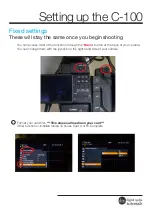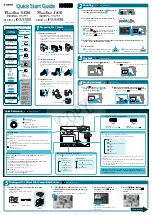
112
•
Operational Reference
Nano Series GigE Vision Camera
•
Trigger Line Polarity: For external line signals, a rising edge signal is suggested to minimize
the time it takes for the opto-coupler to change state.
•
Trigger Source=Timer1End Event: The Timer1 End Event is used as the internal trigger
source. Refer to
for information on those features.
•
Trigger Source=Counter1End Event: The Counter1 End Event is used as the internal trigger
source.
Input Line Details
The general purpose input line signals are connected to I/O lines 1 and 2, which have the following
features for control or status indication.
•
Feature set: LineSelector (RW), LineName (RO), linePinAssociation (RO), LineFormat (RO),
LineMode (RO), lineDetectionLevel (RW), lineDebouncingPeriod (RW), LineInverter (RW),
LineStatus (RO).
•
Connector: See 10-pin I/O Connector Details for connector pinout and electrical information.
The cable shell and shield should electrically connect the Genie Nano chassis to computer
chassis for maximum EMI protection.
•
Line Transition Validation: Each input incorporates a signal debounce circuit (following the
opto-couple) to eliminate short noise transitions that could be wrongly interpreted as a valid
pulse. The duration is user-programmable from 0µs to 255µs with CamExpert.
•
Line Signal Propagation & Timing: Maximum delay values are defined in Input Signals
Summary of Contents for Genie Monochrome Series M1280
Page 179: ...Nano Series GigE Vision Camera Operational Reference 177...
Page 215: ...Nano Series GigE Vision Camera Technical Specifications 213 Note Genie Nano with C or CS Mount...
Page 237: ...Nano Series GigE Vision Camera Technical Specifications 235 Models M C5100 M C4090...
Page 252: ...250 Additional Reference Information Nano Series GigE Vision Camera...
Page 254: ...252 Additional Reference Information Nano Series GigE Vision Camera...
















































